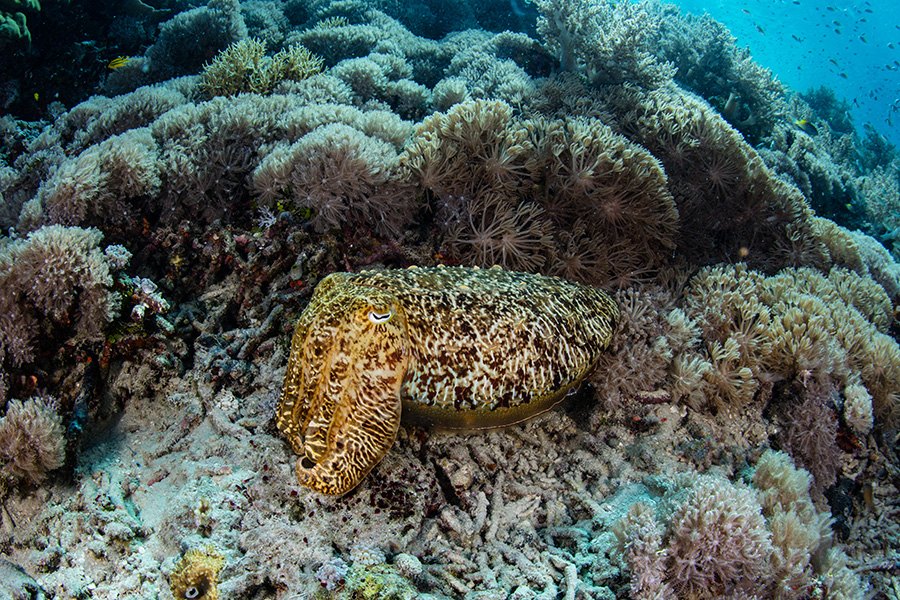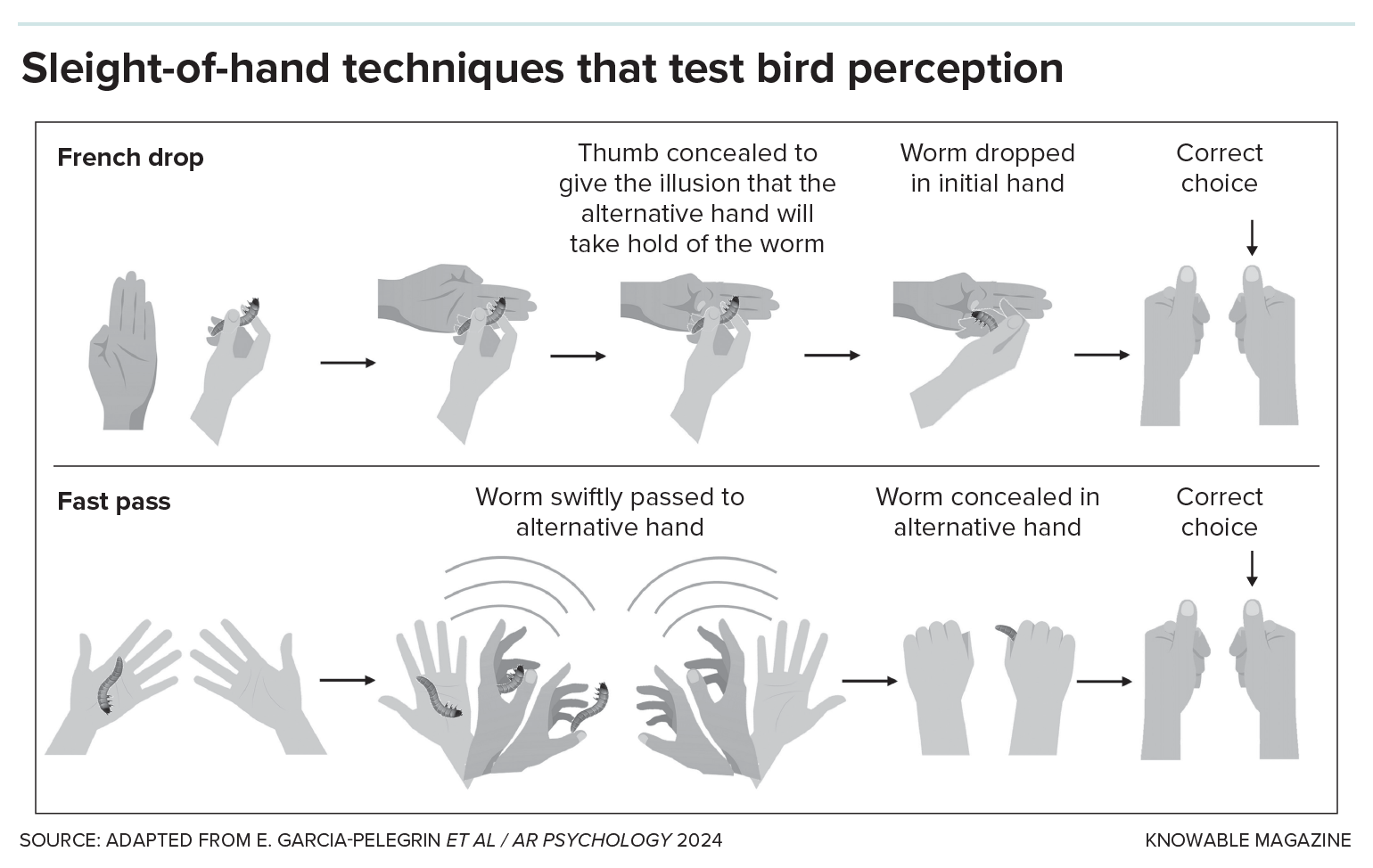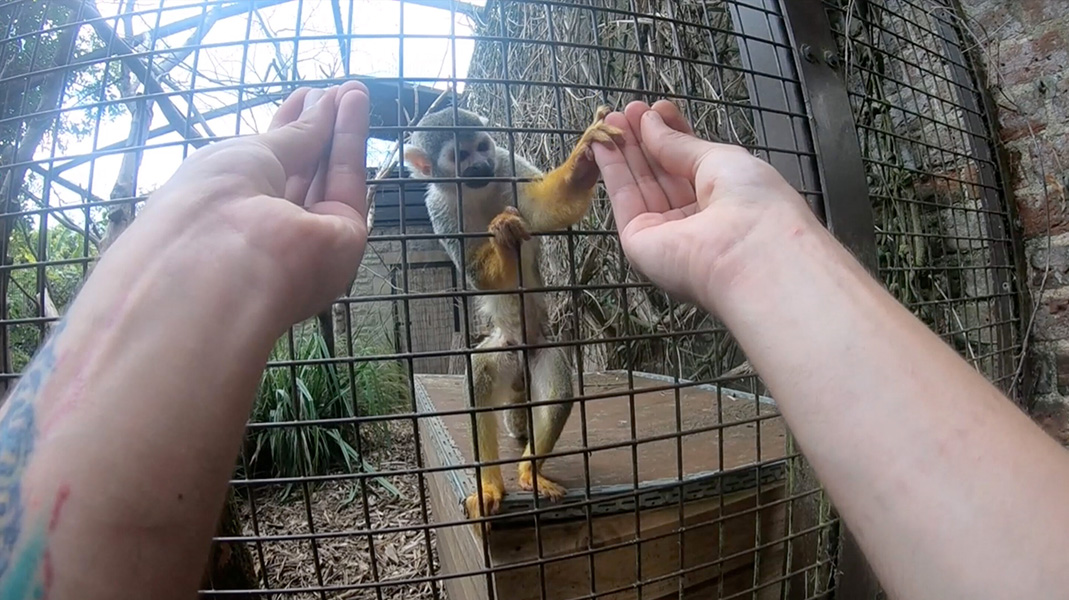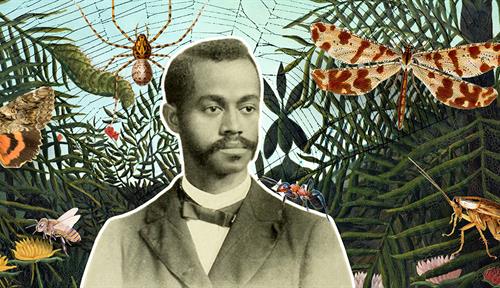Abracadabra! How magic can help us understand animal minds
By performing tricks for birds, monkeys and other creatures, researchers hope to learn how they perceive and think about their world
Support sound science and smart stories
Help us make scientific knowledge accessible to all
Donate today
To help pay for his undergraduate education, Elias Garcia-Pelegrin had an unusual summer job: cruise ship magician. “I was that guy who comes out at dinnertime and does random magic for you,” he says. But his latest magic gig is even more unusual: performing for Eurasian jays at Cambridge University’s Comparative Cognition Lab.
Birds can be harder to fool than tourists. And to do magic for the jays, he had to learn to do sleight-of-hand tricks with a live, wriggling waxworm instead of the customary coin or ball. But performing in an aviary does have at least one advantage over performing on a cruise ship: The birds aren’t expecting to be entertained. “You don’t have to worry about impressing anybody, or tell a joke,” Garcia-Pelegrin says. “So you just do the magic.”
In just the last few years, researchers have become interested in what they can learn about animal minds by studying what does and doesn’t fool them. “Magic effects can reveal blind spots in seeing and roadblocks in thinking,” says Nicky Clayton, who heads the Cambridge lab and, with Garcia-Pelegrin and others, cowrote an overview of the science of magic in the Annual Review of Psychology.
What we visually perceive about the world is a product of how our brains interpret what our eyes see. Humans and other animals have evolved to handle the immense amount of visual information we’re exposed to by prioritizing some types of information, filtering out things that are usually less relevant and filling in gaps with assumptions. Many magic effects exploit these cognitive shortcuts in humans, and comparing how well these same tricks work on other species may reveal something about how their minds operate.
Clayton and her colleagues have used magic tricks with both jays and monkeys to reveal differences in how these animals experience the world. Now they are hoping to expand to more species and inspire other researchers to try magic to explore big questions about complex mental abilities and how they evolved.
The science of magic
Professional magicians have always had an intuitive grasp of human psychology, but the formal scientific study of how magic works on people is only two decades old. It’s still a niche discipline, says psychologist Gustav Kuhn, who helped kick-start the field and heads the Magic Lab at the University of Plymouth in the United Kingdom. But there’s now a Science of Magic Association that holds international conferences (the next one is in Las Vegas), and in the last two decades or so, scientists have published over 100 papers on magic’s effects on humans, covering topics including perception, consciousness, free will and beliefs.
“I think it can provide you with a new perspective on science,” Kuhn says. Now Clayton and her colleagues are bringing that perspective to the science of animal cognition.

Cuttlefish have been known to use their ability to change the color and texture of their skin in deceptive ways. This may make them good candidates for experiments that use magic tricks.
CREDIT: ISTOCK.COM / VELVETFISH
The inspiration to use magic tricks came to Clayton from Clive Wilkins, the Cambridge psychology department’s artist in residence, who also happens to be a magician. Watching Wilkins perform sleight-of-hand tricks and stash objects in secret pockets reminded Clayton of someone else she knows well: the California scrub jay. Her earlier work found that when scrub jays who are hiding food know they’re being watched by other scrub jays, they will come back to re-hide the food once the other birds have left.
“A lot of the deceptive techniques that the jays use to protect their caches are things that magicians do in their performances,” Clayton says. Jays try to obscure their actions as they hide food by choosing dark places, burying it in quiet material like sand rather than gravel, or using their bodies to block another bird’s view. Clayton has observed that if jays can’t obscure what they’re doing, they will try to confuse onlookers by moving their food a half-dozen times, sometimes feigning a cache while concealing the food in a throat pouch.
Serendipitously, Garcia-Pelegrin was one of Clayton’s graduate students at the time and was game to perform tricks for an avian audience in the name of science. This involved a lot of waiting for the lab’s Eurasian jays to volunteer by flying into a room connected to the aviary and hopping onto a perch in front of him.
“The papers don’t tell you the hours and hours of me just sitting there alone, in a room in Cambridge, just cold because we have no heating, just waiting for a bird to show up,” he says. “But they do show up.”
Tricks for tweets
One of the tricks that Garcia-Pelegrin performed for the jays is the “fast pass,” where a coin — or in this case a waxworm — is tossed between the magician’s hands so quickly that the visual system of a human would miss it altogether. When we rapidly switch our gaze from one object to another, our eyes move in fast jumps known as saccades, rather than in a smooth motion that would cause the world to blur. During each jump, there’s a split second when we don’t see anything at all, a momentary blindness during which a skilled magician can throw an object from one hand to another right in front of an audience without their seeing it.
Birds, however, are able to see much faster movements than we are, and consequently don’t depend on saccades as much. “They are aerial beings. Being fast and being able to accurately perceive the fast world around them is their niche, is their specialization,” Garcia-Pelegrin says. “I would expect them to never fall for the trick.”

Sleight-of-hand tricks exploit specific aspects of human perception and cognition. By trying those same tricks on other animals, scientists can learn something about how their minds differ from ours.
But they did. In a video of the experiment, a jay named Homer turns his head to the side to focus with one eye on the worm as it sits in an open hand. As soon as Garcia-Pelegrin’s hands move laterally, Homer quickly rotates his head to face forward and watch the rest of the trick with both eyes. With his beak, he chooses the hand the worm started in, staring intently as that hand opens to reveal that it’s empty. It seems that during the switch from monocular to binocular vision, there’s a split second where Homer’s world goes blank — a previously unknown blind spot.
“The beauty here is that this magic trick capitalized on a completely different blind spot that has zero to do with being mammal, zero to do with being human, and 100 [percent] to do with being a bird,” says Garcia-Pelegrin, now an animal behaviorist at the National University of Singapore.
A trick called the French drop, on the other hand, did not fool the birds. For this trick, Garcia-Pelegrin has the back of his hand facing the bird, holding a worm with fingers and thumb pointed up. A bird named Stuka watches as he sweeps his other hand in front of the worm as if he is grabbing it with his thumb. But Stuka chooses the original hand, where the worm was secretly dropped.
At first the scientists were unsure why Stuka and the other birds weren’t fooled by this trick. Some thought it might be something about their vision, but Clayton had a hunch it came down to the fact that birds don’t have hands.
Instead of a blind spot, the French drop relies on expectations: A person moving their hand that way grasps the object with their thumb. People in the audience never see the magician’s thumb actually do this, they just expect that it does. It’s a perceptual shortcut that helps us to react quickly to the world around us with incomplete information. Apparently, the jays don’t have the same expectations.
Being raised by humans, the birds are used to seeing humans use their thumbs to pick up and hold food, Clayton says. “But they can’t do it themselves.” She says her own experience with performing and teaching dance has given her insight into the difficulty of trying to embody the movement of others who are built differently — whether they simply have longer arms or they have wings or flippers instead. “For me, as a dancer, there’s a big difference between observing someone do something beautiful and actually imagining how you would do it yourself.”
To test Clayton’s hypothesis, the scientists came up with an ingenious experiment involving three species of monkeys with different thumb anatomy: capuchins with fully opposable thumbs, squirrel monkeys with pseudo-opposable thumbs, and marmosets without opposable thumbs. Garcia-Pelegrin tried the French drop on all of them and, sure enough, the monkeys who are able to grasp objects with their thumbs — capuchins and squirrel monkeys — were fooled. The marmosets responded just like the jays.

Squirrel monkeys like this one are able to grasp objects using their thumbs, and are fooled by the French drop magic trick the same way humans are. Marmosets, who don't have opposable thumbs, are not fooled.
CREDIT: E. GARCIA-PELEGRIN
For Clayton, these experiments reveal something interesting about embodied cognition, the idea that the body, and how it interacts with the environment, is an important aspect of how minds work. The brain isn’t alone in a vacuum making sense of what it sees, she says. “It’s about how the whole body interprets the movements.”
Magic cups
Though performing magic for animals in the name of science is a relatively new idea, methods akin to magic effects have been used for decades. One type of experiment, borrowed from psychology studies with human infants, reveals what animals understand about the world by seeing if they’re surprised by the impossible.
Babies stare longer at something that surprises them, and scientists think the same is true for many animals. Based on staring times, scientists have learned that orangutans are bewildered when a grape goes into a container but a piece of carrot comes out, dogs are perplexed if a bone magically disappears, and crows think it’s strange if a tool moves on its own.
These experiments are quite similar to the classic “cups-and-balls” magic trick where balls seem to appear and disappear under cups. Comparative psychologist Alex Schnell tested Clayton’s jays with a similar trick when she was a postdoctoral researcher in Clayton’s lab. But instead of disappearing balls, the birds were presented with magically transforming treats.
In one variation of the trick, a bird named Jaylo sees Schnell drop a waxworm — the Belgian truffle of the jay world, Clayton says — into one of two cups. Both cups are then turned upside down. What Jaylo doesn’t know is that Schnell pre-baited the cup with a less exciting piece of cheese and faked the waxworm drop using sleight-of-hand. Jaylo topples the cup she thinks the worm is in, only to find cheese instead. She double checks the cup for the worm and then leaves without eating the cheese, which is normally a perfectly acceptable treat.
In this video of an experiment in Nicky Clayton’s lab, a Eurasian jay named Jaylo reacts to a magically transformed treat.
CREDIT: A.K. SCHNELL ET AL / ROYAL SOCIETY OPEN SCIENCE 2021
Animal cognition researcher Gabriella Smith has recently tried a similar trick with Goffin’s cockatoos and keas — large, gregarious parrots from New Zealand — at the Messerli Research Institute at the University of Veterinary Medicine, Vienna. Using magic appealed to Smith because it doesn’t require training the animals and allows them to behave naturally.
“It’s a different approach to cognitive study, in that you are creating a stage for an animal to express its expectations,” she says. “And what you’re recording is the behavior in response to their expectations and what happens when you violate their expectations.”
Keas are known for exploring the belongings of tourists and occasionally stealing things (including a GoPro camera, as seen in the resulting kea home movie). The birds in the research aviary are very curious and usually game to participate in experiments, coming when their names are called and lining up to wait their turn — though some parrots will cut the line, rush into the testing compartment, try to steal food and refuse to leave. “Kea are like toddlers with very sharp clamps on their face,” Smith says.
For the trick, Smith uses open-ended wooden boxes similar to hollow ones the birds have explored before. But unlike those boxes, these have a hidden shelf. Into the top of the box, she drops an average treat, such as a piece of apple, which lands on the hidden shelf, and then she lifts the box to reveal a tastier peanut that was secretly placed in the bottom beforehand — or vice versa.
In the case of cockatoos, Smith is looking to see whether the birds flare their crests when they’re surprised. With keas, she uses infrared thermal imaging cameras to detect changes in blood flow in the exposed skin around their eyes.
One question she hopes to address with this setup is whether the animals respond differently to downgraded and upgraded treats. “I was really interested in finding the elation effect,” she says — the “Oh, that’s nice” feeling you get when you find a forgotten five-dollar bill in your pocket. There’s a dearth of work on positive emotions in animals, Smith says, and magic might be a way to explore that.
Expanding the magic circle
For Clayton, jays seemed a natural starting point because they themselves use deceptive tactics in the wild. But they aren’t the only ones. Like jays, rooks have been known to act like they’re caching food while instead holding it in a throat pouch. Apes are known to use their gaze to redirect attention away from something they don’t want others to discover.
And male cuttlefish, which can change the color and texture of their skin, sometimes display a courting pattern to a female on one side of their body while hiding what they are doing from nearby males by disguising their other side with female coloration. This kind of behavior might make these tricksters good candidates for being tricked themselves. “We haven’t designed the experiments yet, but our next stop is the cuttlefish,” Clayton says. “I think we could use magic effects in interesting ways to see what they are confused by.”
With more experiments involving different species, especially ones as distant as cephalopods like cuttlefish, scientists may gain insight into some of the biggest questions about animal minds, such as whether they are consciously aware of the past and can imagine the future. Discovering which species have which abilities could help to piece together how these mental capacities evolved.
“You wouldn’t necessarily think that [magic] says anything about memory or future planning,” Clayton says. “But it does — because when an object disappears, you have to have a memory of where you think it was, and you have to have an expectation of where you think it will be.”
10.1146/knowable-060524-1
TAKE A DEEPER DIVE | Explore Related Scholarly Articles






